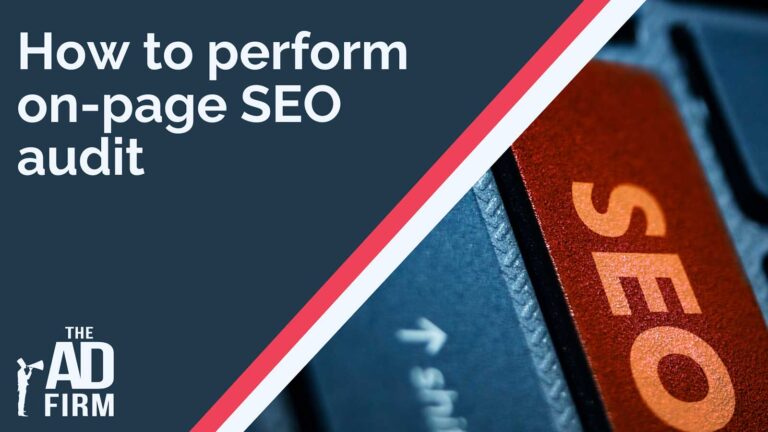It’s undeniable that as the digital world evolves, so do the myths surrounding it. Shaped by shifting algorithms and dynamic user patterns, these misconceptions can often lead to misguided strategies. Here, we debunk these myths, offering readers a more grounded understanding backed by the latest information. So, what are social media myths 2023?
The Facebook Era is Over Myth
In recent years, there has been a growing sentiment that Facebook’s time in the sun has waned. With the rapid rise of newer platforms, some are quick to put Facebook in the digital history books. However, the facts tell a different story.
Facebook’s Continued Dominance
With 2.96 billion monthly average users, Facebook is the number one social media platform. This continuing relevance isn’t just based on user numbers; it’s also reflected in the platform’s potency as a marketing tool.
Its expansive user base and nuanced ad targeting capabilities mean that brands can reach a diverse audience, from tech-savvy millennials to baby boomers. And with recent data showing its extensive ad reach, it’s clear that marketers still regard Facebook as a critical part of their digital strategies. This counters the popular social media myths 2023 about Facebook’s diminishing influence.
Interesting Article: How to use instagram for your business.
Negative Perception of Advertising Myth
There’s a prevailing notion that internet users have become increasingly opposed to online advertising. The rise of ad blockers and stories of ‘banner blindness’ might suggest users are turning away from digital ads. But is this really the case?
Evolving Attitudes Towards Advertising
Contrary to the myth, attitudes towards digital advertising have been undergoing a positive transformation. With a 9.3% YoY increase in positive ads perceptions, it’s evident that users are not entirely against online advertising. What they demand, however, is relevance and representation. Addressing this is key to debunking social media myths 2023 about advertising perceptions.
This shift is not just about the aesthetics of ads but their content. Users want to see themselves reflected in the advertising content; when they do, they respond more positively. This signals a clear path forward for brands: craft ads that resonate, represent, and respect the target audience.
The ‘New Normal’ of Online Shopping Myth
The COVID-19 pandemic ushered in unprecedented changes in consumer behavior. With lockdowns and restrictions in place, e-commerce witnessed a massive surge, leading many to proclaim it as the ‘New Normal.’ But did this shift permanently alter shopping behaviors?
Resilience of Traditional Shopping
While the pandemic did boost e-commerce activities, debunking some social media myths 2023, this trend has shown signs of waning as restrictions have eased. Data reveals a 1.5% decline in e-commerce activities compared to the previous year. With an 84% abandonment rate for online shopping carts on mobile, it’s clear many users aren’t completing their purchases.
These statistics hint at the resilience of traditional shopping. As the world steers towards pre-pandemic norms, the tactile and social experience of in-person shopping still holds considerable appeal for many consumers. While e-commerce will undoubtedly remain significant, it’s clear that predictions of the demise of brick-and-mortar retail were premature.
Shrinking Social Media Marketing Budgets Myth
In light of social media myths 2023, some speculate that brands are tightening their purse strings, reducing their allocations for social media marketing.
Digital Ad Spend’s Unyielding Growth
Contrary to the idea that social media marketing budgets are dwindling, the data paints a different picture. As of recent statistics, the total ad spend across all channels, both offline and online, amounts to a staggering 45.24 billion US dollars. Out of this hefty sum, an overwhelming 37.42 billion US dollars, which equates to 82.7% of the total ad spend, is directed towards digital ads.
Additionally, this commitment to digital advertising isn’t static. The year-on-year change in digital advertising spending has marked a robust growth, with an increase of 12.8%, translating to an additional spend of 4.3 billion US dollars. Not only are brands not shrinking their digital budgets, but they are actively investing more in the digital frontier. Clearly, the idea of reduced budgets is one of the misleading social media myths 2023.
Marketers Favor TikTok over Instagram Myth
With TikTok’s explosive popularity, many believe it’s outpacing Instagram, especially in marketing. But what do the statistics indicate?
Instagram’s Persistent Reach
Despite the undeniable popularity of TikTok, Instagram is still ahead of the curve when it comes to advertising reach. TikTok’s ad reach might be impressive, catering to around 19.6 million 18+ users, but Instagram’s ads cater to an even broader audience, reaching approximately 28.75 million internet users. This implies that while TikTok engages about 29.7% of the total internet user base, Instagram makes its mark, with nearly half of all internet users at 43.5%.
For marketers, these numbers indicate that Instagram remains an immensely profitable platform. However, it’s essential to stay updated. Although Instagram is currently leading, the quarter-on-quarter change in its ad reach has shown a decline of 3.5%, while TikTok has seen a spike of 10.9%.
The Cryptocurrency Boom Myth
With their decentralized allure and massive price swings, cryptocurrencies have made headlines for a while. But is their adoption as widespread as the media makes it out to be?
Cryptocurrency’s Real Scope
Despite the buzz surrounding cryptocurrencies, their adoption tells a more subdued story. Even with moments of increased attention, notably during price hikes, just 9.5% of internet users actually own any cryptocurrency. This percentage underscores the importance of differentiating between media hype and the real-world adoption of these digital assets.
A/B Testing as the Sole Insight Generator Myth
The importance of A/B testing in analyzing user responses is undeniable. But is it the only method to extract valuable insights?
Embracing Diverse Data Analysis
While A/B testing remains valuable, it’s a fragment of the analytics toolkit. For instance, multivariant testing provides deeper insights by allowing the optimization of multiple factors simultaneously. The 2023 State of Social Media report emphasizes this trend, noting that effective use of diverse analytical methods in social media leads to more informed decision-making and strategies.
A holistic approach to data analysis is essential for any company aiming for success in today’s digital landscape. By understanding these approaches, businesses can dispel some common social media myths 2023 and optimize their strategies.
LinkedIn Ad Copy Length Myth
In LinkedIn advertising, the prevailing wisdom is to keep ad copies short and concise. But is this always the best approach?
Engaging with Lengthy Ad Copy
In certain contexts, findings suggest that lengthier ad copies can enhance engagement rates. The effectiveness hinges mainly on the audience’s familiarity with the brand and the information provided. For instance, a more detailed copy may be beneficial if the aim is brand awareness and education.
On the other hand, concise messaging might resonate better for well-established brands targeting a familiar audience. The key lies in understanding the target demographic and tailoring the content length accordingly. Debunking such social media myths 2023 is essential for effective LinkedIn advertising strategies.
Gated Content as the Only Lead Generator Myth
Previously, gated content was hailed as the singular powerhouse for lead generation. But is this strategy still as effective in the modern digital landscape?
The Fall of Gated Content
While gated content used to reign supreme, its influence has faded due to the sheer volume of online content and changing user preferences. Another concern is that it can be hidden from search engines, pushing potential customers away. In contrast, open content continues to be a potent tool for lead generation. Modern brands are blending both methods to optimize results.
Linear Path to Purchase on Social Media Myth
The traditional purchase funnel — moving from awareness to consideration to purchase — has long been the model for customer journeys. But does this linear path still hold true, especially on social media?
The Non-linear Buyer Journey
Today’s customer journey is far from linear. With numerous information and choices available, buyers carve out their unique paths. Brands that recognize this non-linearity and focus on trust-building, relationship nurturing, and timely insights tend to fare better. Instead of forcing a sale, the emphasis is on adding value and fostering genuine connections.
Vanity Metrics as Poor Performance Indicators Myth
Often dismissed as mere ‘vanity’ due to persistent social media myths 2023, metrics like likes, shares, and followers are frequently sidelined. But do they truly lack substantial value?
The Underrated Power of Vanity Metrics
While they may seem superficial initially, vanity metrics can offer many insights. For instance, the follower count on a company’s page can directly influence the potential impressions each post garners. When interpreted correctly, these metrics can offer deep insights into audience engagement, brand reach, and overall digital strategy efficacy. Far from inconsequential, they are pivotal in shaping a brand’s digital narrative.
Mandatory CTA and URL in Every Post Myth
Every post should drive action—that’s the conventional marketing mantra. But is it always applicable?
The Essence of Content over CTAs
Today’s digital audiences prioritize genuine value over aggressive marketing tactics. As such, not all impactful posts require a CTA or links that drive users away from the platform. Recognizing that most users prefer not to be redirected, posts focusing on sheer value or entertainment without pushing external links enhance user experience and deepen brand loyalty.
30-Day Social Media Ads Evaluation Myth
A commonly held belief is that the effectiveness of social media ads can be judged within a month of their launch. But is this timeframe realistic?
The Long Game of B2B Sales
B2B sales cycles are a testament to the adage: patience pays off. A significant 75% of B2B businesses engage in sales cycles beyond a few weeks, often taking four months to onboard a new client.
To add perspective, Hubspot’s research pinpoints the average SaaS B2B sales cycle at 83 days. These figures spotlight the necessity for endurance and strategic foresight, highlighting that immediate successes in B2B sales are more outliers than the standard.
Aimless Hours on Social Media & Increased Internet Time
We often picture the modern individual constantly scrolling through social media, assuming everyone spends more time online than ever. But are these beliefs accurate?
The Evolving Digital Landscape: Facts Uncovered
Contrary to the notion that social media is primarily for casual entertainment, 55.8% of users are now turning to these platforms mainly for brand research. Social media is evolving from just a place for casual chats to a critical source of information.
Today’s users are more than passive viewers; they actively search for brand-specific details. This trend emphasizes the importance of businesses having an impactful and well-informed online presence.
At the same time, despite more people being online, the total time they spend there is decreasing. Recent stats show a 6.7% drop in average daily internet use, meaning people are online for roughly 30 minutes less than a year ago. This indicates that while the internet remains central to our lives, how we use it is continually changing.
The Ineffectiveness of Organic Social Media Myth
With the dominance of paid advertising campaigns, many believe that organic social media has lost its sheen. But is this truly the case?
The Strength of Organic Social Media
Despite the undeniable reach of paid campaigns, organic social media remains a foundational element in digital marketing. An impressive 77% of buyers prefer companies whose executives are active on social platforms. Additionally, organic content is pivotal in talent branding and community building. While paid strategies expand reach, organic content cements trust and brand loyalty.
Social media myths 2023 can create significant barriers, diverting brands from optimal strategies. Rooting decisions in solid data is crucial to unlocking unparalleled success and remarkable results. By debunking common myths, we’ve highlighted strategies that resonate with today’s discerning digital audience. At The Ad Firm, we don’t just observe these trends; we turn them into tangible results for you. Connect with us today!








